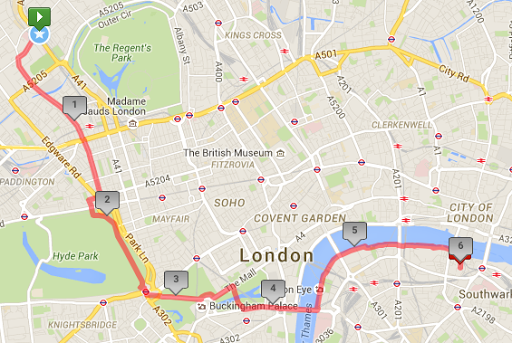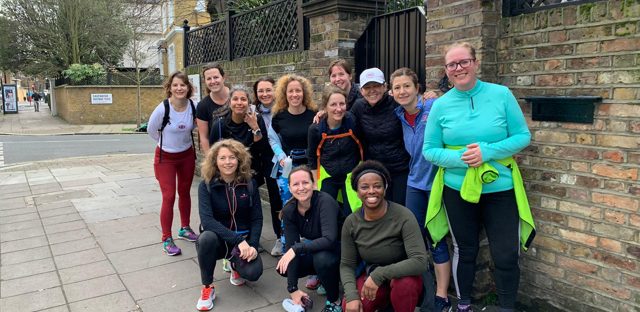Hi everyone,
Well, we are really starting things this week. Up until now, we have been building our muscles and our lungs and our psyche to know that we can run for 60 minutes. We will now start to add on a bit each Thursday to build you up to the distance you need to run that race. The other thing to know is that while we plan the runs for a certain amount of time, we won’t all finish the planned distance at that time. So depending on your pace for that day, you may run a little less than the expected time or a little more, but we will all need to run the same distance for the race so we all need to build up to that distance even if it takes different times for each of you.
Think of how far you’ve come – it really is amazing. We can’t wait to watch you grow from here!
OK – today’s lecture – why we run slowly. This is from Paula Mitchell, our founder.
Why do we run the long run slower than race pace?
The quick answer is that it has to do with how your body builds fuel, which is something you’ll need for the race! I’ll delve into the basic science of fueling (which I have hugely over-simplified but hopefully it’ll get my point across). To fuel our runs we have 3 options – Creatine Phosphate (CP), glycogen and fat.
Creatine Phosphate– You have about 15 seconds worth of CP fuel – that’s it. Think Usain Bolt running the 100m – he fuels with CP and it works because he can run 100m in less than 15 seconds. CP is where your body will go first looking for fuel, particularly if you take off like a rocket from Barclays. Think of CP as kindling on a fire – it catches fire easily but burns out very quickly.
Glycogen– Glycogen is the next fuel option. Glycogen is basically stored in your muscles and in your liver and because of that it makes glycogen a bit more difficult to burn as fuel (think of damp firewood – it will eventually burn but it takes quite a bit to get it going).
Fat– Fat is the 3rd source of fuel and most runners, even the very lean women, have an ample supply of it. Think of fat as a butane tank of gas on the BBQ grill – once it’s lit, you can have countless cook-outs before the fuel is gone.
Here’s the important part– All of those fuel sources – kindling, damp firewood or butane gas need something to ignite them and keep them burning. Physiologically speaking that ignition or burning “tool” is ATP which is created by mitochondria; so, the more mitochondria you have the more efficient you are as a fuel burning machine.
What is mitochondria and how do we get more of it? Some of us are genetically blessed with higher mitochondria counts. Thank your mother for that – it comes through the maternal side of the genetic equation. If you didn’t win the genetic lottery, then the only way you can increase mitochondria is through LONG, SLOW, ENDURANCE training (LSE). When you go for a long run at a slow pace, you actually produce mitochondria. Kind of cool, huh? Now remember – we need mitochondria to help ignite our fuel sources. So what does that mean for you? It means SLOW DOWN on your long run – give your body a chance to become a mitochondria production factory. If you do your long run at a strong pace, you’re missing out on this benefit.So we will be keeping it SLOW on Thursdays, and now you know why.
The route this week:
BOROUGH MARKET!
Please make sure to bring your Oyster Card or contactless card for the tube ride back. Also, you might want to have some cash if you plan to do some shopping – not all vendors accept cards. We will head first to Monmouth Coffee – legendary filter coffee – and then we can head into the market together or separately or head home – whatever works for everyone.
Borough Market via Westminster Bridge
We head to Hyde Park via the usual route: start heading west on Circus Road and turn left on Grove End and follow south as it becomes Lisson Grove. Cross over Marylebone Road and continue on Seymour Place until the end. Turn right and cross over Edgware Road and then left to enter Hyde Park at the intersection with Stanhope Place. Run along the eastern edge of the park to Hyde Park Corner, under Wellington Arch and down Constitution Hill. Run past the Victoria Memorial down the mall and enter St. James Park. Run over the pond and out of the park, turning left onto Birdcage Walk and down into Parliament Square to Big Ben. Continue past Big Ben and cross Westminster Bridge. After the bridge turn left to run along the Thames until the river path ends after Southwark Bridge. Borough Market is under the railway bridge near the London Bridge station.

